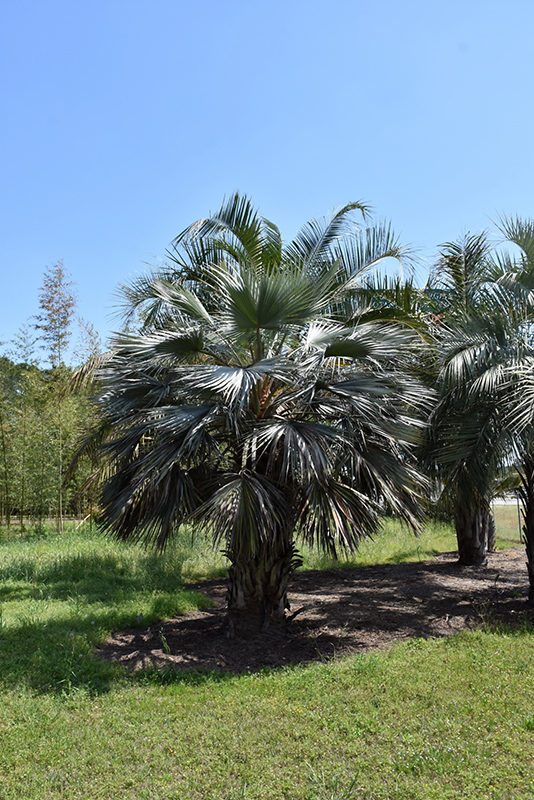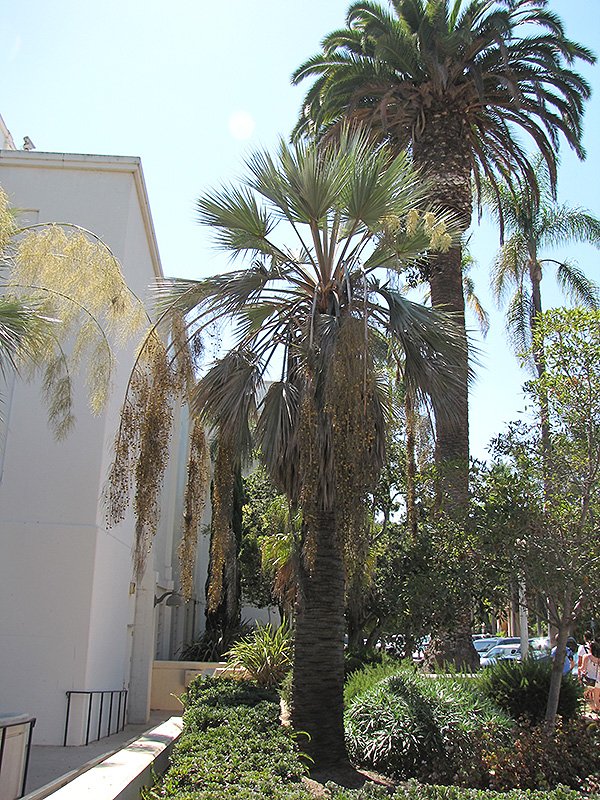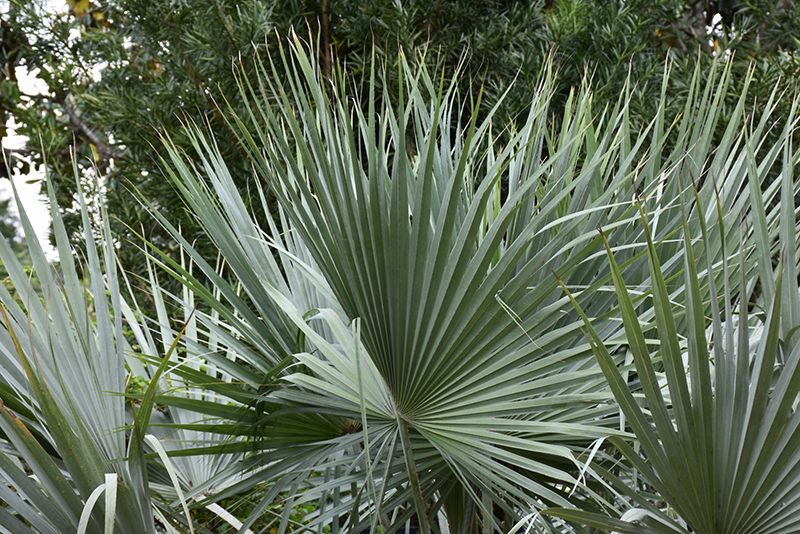Height: 50 feet Spread: 20 feet
Sunlight:
Hardiness Zone: 8b Other Names: Blue Hesper Palm, Blue Fan Palm Description: A majestic palm that is native to Baja California, Mexico; attractive appearance especially when young; persistent leaves should be trimmed away; it can survive mild freezing temps; a wonderful addition to the tropical landscape Ornamental Features Mexican Blue Palm is draped in stunning clusters of chartreuse flowers with yellow overtones hanging below the branches from late winter to early spring. It has attractive grayish green foliage with hints of powder blue. The large fan-shaped palmate leaves are highly ornamental and remain grayish green throughout the winter. The gold fruits are held in abundance in spectacular clusters from early to mid summer. The fruit can be messy if allowed to drop on the lawn or walkways, and may require occasional clean-up. The rough dark brown bark is extremely showy and adds significant winter interest. Landscape Attributes Mexican Blue Palm is an open evergreen tree with a strong central leader and a towering form, with a high canopy of foliage concentrated at the top of the plant. Its average texture blends into the landscape, but can be balanced by one or two finer or coarser trees or shrubs for an effective composition. This is a relatively low maintenance tree, and usually looks its best without pruning, although it will tolerate pruning. It has no significant negative characteristics. Mexican Blue Palm is recommended for the following landscape applications; Planting & Growing Mexican Blue Palm will grow to be about 50 feet tall at maturity, with a spread of 20 feet. It has a high canopy with a typical clearance of 6 feet from the ground, and should not be planted underneath power lines. As it matures, the lower branches of this tree can be strategically removed to create a high enough canopy to support unobstructed human traffic underneath. It grows at a slow rate, and under ideal conditions can be expected to live to a ripe old age of 150 years or more; think of this as a heritage tree for future generations! This tree should only be grown in full sunlight. It does best in average to evenly moist conditions, but will not tolerate standing water. It is very fussy about its soil conditions and must have rich, acidic soils to ensure success, and is subject to chlorosis (yellowing) of the foliage in alkaline soils. It is somewhat tolerant of urban pollution. This species is not originally from North America.![]()
![]()
![]()
![]()
![]()
![]()
![]()
![]()
![]()
![]()
![]()
![]()
top of page
Louie's Nursery Menifee - Plant Finder
Characteristics
Applications
Features & Attributes
This tool is an online resource representing many of the varieties that we carry over the course of the season, and is intended for informational purposes only. Inventory varies seasonally, so we cannot guarantee that every plant will be in stock at all times - please contact the store directly for current availability. It does not include our entire selection of plants, so be sure to visit our store to see varieties that may not be represented on this list.
bottom of page


